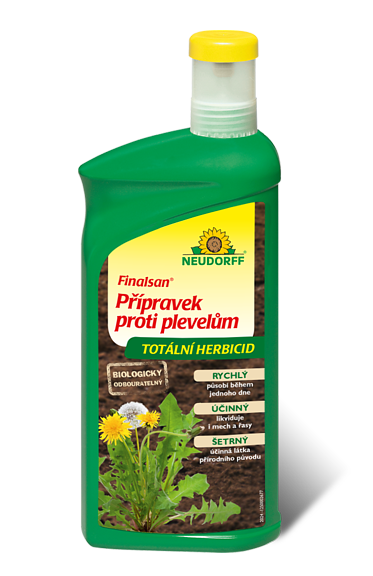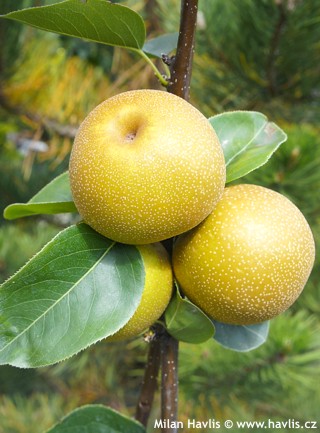Pyrus pyrifolia 'KOSUI' nashi, Japanese pear
Pyrus
Nashi pear is a delicious fruit connected with Orient. This tree comes from Japan, hence its name Japanese pear. It is a merge between apple and pear: it has fruit taste, aroma, and habit of a pear tree, but fruit shape and growing requirements are identical to an apple tree. Since this fruit is still quite expensive in supermarkets (for no obvious reason because it crops heavily), why don’t you grow your own tree? It is almost maintenance free, and you will be surprised how hardy it is.
Kosui is a nashi pear of excellent taste, for me definitely the best I have had so far. It produces rounded fruit with smooth, dark sandy yellow skin covered with tiny speckles. The flesh is white, extremely juicy and sweet, and on top of that so aromatic – you find yourself wondering when someone injected a shot of rum in it, really. If you like firm fruit you can harvest them from about mid September, but in this case I recommend waiting until full maturity when the quality is unbeatable.
It is best eaten right off the tree because it does not store well – it can be kept in the fridge for a few weeks only. If you pick it up in early September it will be solid like a true pear, but if you wait until end September it will soften up considerably yet keeping its good consistency. It completely lacks typical apple acidity.
Beware of wasps when the fruit gets closer to maturity. Once they smell the sweet fruit they fly in without a landing permission, and damage it by biting into one by one. Not speaking of the danger of their sting attack. Just hang small plastic bottles with beer onto the tree a few weeks before harvest. Wasps are alcohol addicts, and when they can choose between fruit and anything with OH in its formula they always go for alcohol. So they drink themselves to death and drown.
Nashi pear flowers at the same time as pear trees which are needed for cross pollination. It can be a vigorous grower so pruning is recommended for locations with limited space. Cut back long branches to a few flower buds, just as you would with an apple tree in late winter. In early summer thinning out is worth some effort in order to leave only such amount of fruit on each branch that can guarantee maturing to a reasonable size. It will grow in any average garden soil, but it does best in medium fertile, moist but well-drained soil in full sun. It is very hardy – min. to -27°C (USDA zone 5b).
Last update: 30-01-2012; 24-10-2018

756,5 Kč

756,5 Kč
Goods are shipped all over Europe. For Russia and U.K. and for further details please read about SHIPPING OPTIONS HERE.
Are you interested in a serious discount for orders NOV-FEB? Check your options here.
THE PRICES INCLUDE VAT of 15%. For quick conversion you can use 1 CZK = approx. 0.04 EUR
- STANDARD QUALITY - Plants of this group are 1st class quality with number of branches and overall density adequate to their size and age, considering they were container grown.
- DE LUXE QUALITY - This label guarantees a luxurious quality of manually selected plants that, compared to their height and age, are exceptionally dense and beautiful.
- EXTRA - These plants are usually mature and bigger specimens with exceptional overall appearance.
- STANDARD (as described in the plant form) means a tree with a trunk of 190-210 cm and a crown at the top, unless specified differently. The commercial size for trees is their girth measured in the height of 1m from ground.
- HOBBY - These plants are of the same quality as our standard-quality plants but younger and therefore cheaper.
- SHRUB - a woody plant with branches growing bushy from the ground level.
- HALF-STANDARD or MINI-STANDARD - a small tree with shorter trunk, its size is usually specified.
- FEATHERED - These are trees with branches growing already from the base of the trunk and up along the stem.
- GRASSES and PERENNIALS - Sizes given usually read the diameter of the pot or the clump, as specified.







































